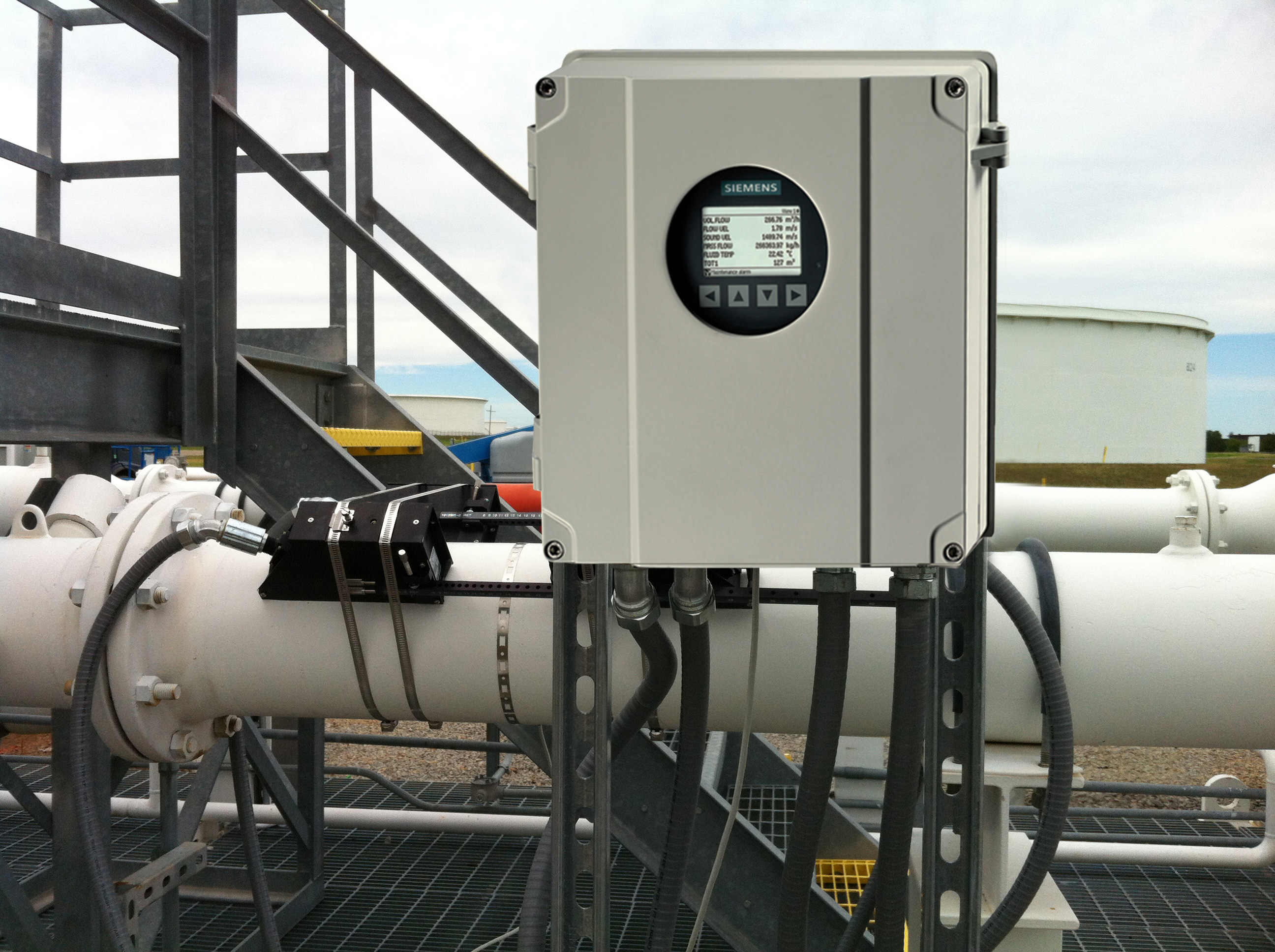
What is the easiest and most cost-effective way to determine what is flowing in your pipeline?
Non-intrusive clamp-on Interface detecting Flow Meter
With pipelines now being used for both storage and transportation of hydrocarbons, it is very useful to know exactly what is flowing through your pipeline and to easily detect when there is a change from one hydrocarbon fluid to another. By simply attaching ultrasonic sensor the outside of your pipeline and using the fluid’s absolute sonic velocity and the sonic velocity rate of change, along with its temperature and pressure, leading clamp-on ultrasonic interface detection meters can precisely determine individual grades of crude oils and refined products, directly through the pipe walls.
Clamp-on ultrasonic interface detection meters supply pipeline owners with reliable and precise in situ multi-product interface detection. Fluid interfaces are determined by a direct measurement method that results in substantial savings, both in terms of the required hardware and, of course, lost, or misdirected product. Such clamp-on ultrasonic interface detectors are ideal for a wide variety of applications, including:
- Gasoline-grade interface detection
- Multi-product interface detection
- Product identification
- Auto batching control
- Detection of entrained water and gas in all products
- Scraper (“pig”) detection
As with all clamp-on meters, it is not necessary to cut the pipe or shut down operations to install or service the interface detector. Transducers are easily mounted on the outside of the pipe, minimizing maintenance expenses, and preventing buildup of deposits that can form around in-line or insertion ultrasonic transducers. The clamp-on design also allows for easy pig or scraper detection. The detector can be mounted wherever there is sufficient piping and access to install the sensors. Additionally, an interface detection meter does not have any straight run requirement before or after the sensor installation.

(Images provided by Siemens. Used with permission)
Using the WideBeam principle
The Siemens Sitrans FS230 clamp-on interface detector employs the patented WideBeam ultrasonic transit-time technology, providing the highest degree of performance. This technology increases precision by utilizing the pipe wall as an amplifier, or wave guide. By working in harmony with the acoustical properties of your pipe, a strong, stable ultrasonic signal is produced and is unaffected by the flowing liquid. WideBeam transducers also makes the meter immune to most pressure-reducing valve noise and enables continued operation over a very wide range of viscosities. WideBeam transducers are designed for use on steel pipelines, but can also be installed on aluminum, titanium, and even plastic pipes. The Siemens interface detector is well proven, with over 25 years of pipeline operation.
Liquident measurement
A key feature of the Sitrans FS230 is the meter’s use of “Liquident” (or fluid ID) to detect interfaces, which significantly improves the meter’s identification accuracy. The Liquident value of any fluid can be compared to a human’s unique fingerprint and is an extremely precise way to distinguish between products with similar densities. Liquident is defined as the sonic velocity of a given liquid at a “base” temperature (60° F by default) and can be further refined by also including pressure in its computation. Because positively identifies the fluid in a pipe, Liquident ensures that the leading ultrasonic meters are very sensitive fluid discovery tools.
Another feature of the Sitrans FS230 interface detector is a user-settable relay to indicate a rate of change alarm. This feature notifies the user or automated controller that an interface has occurred. The relay set point parameters are programmable so that the sensitivity can be adjusted for short and quick as well as long and slow interfaces. In addition, data outputs include API number, density, specific gravity, and base temperature and pressure, and at actual operating conditions if desired.
A technology whose time has come
With today's ever-growing environmental concerns and demands for higher accuracy performance, it is becoming increasingly critical to know what is flowing through your pipeline and when it changes. By incorporating a clamp-on ultrasonic interface detector, pipeline owners will be better equipped to evaluate the condition and content of their pipes easily and affordably – and maintain the highest levels of control moving forward.
This content is sponsored by Siemens. Sponsored content does not necessarily reflect the editorial views of P.I. Process Instrumentation.